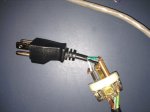hwang21
0
- Joined
- Mar 27, 2013
- Messages
- 2,430
- Points
- 63
I believe this was the picture from the seller (it hasn't arrived at my doorstep yet): Flickr - Bad, bad panda! Come on. We want photos.
EDIT: aaand it seems Flickr is down for the moment
EDIT: aaand it seems Flickr is down for the moment
Last edited:




